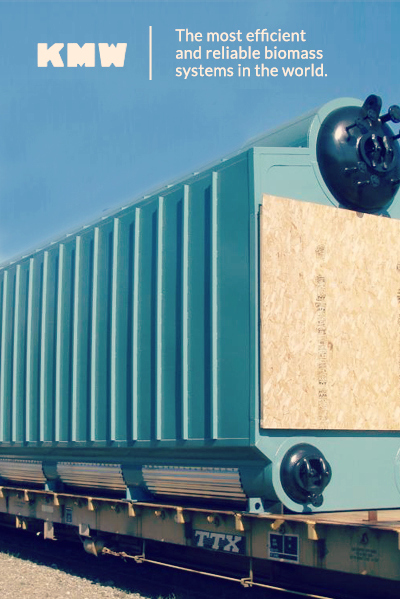1. Fuel Handling
The fuel handling involves extraction of biomass from a storage and then transported to the fuel metering bin adjacent to the combustion system. The equipment to reclaim the fuel from the storage is of the live bottom floor design pioneered and patented by our previous parent company. The floor stokers are powered by a hydraulic system and its sturdy design has proven to be very reliable with low maintenance requirements. The fuel transport system includes conveyors of screw (auger), chain or belt type depending on the fuel feed rate and size characteristics of the material.
2. Combustion System
Fuel is metered automatically into the combustion system, which features a sloping grate floor. The fuel is then evenly distributed on the grates where our unique reciprocating grate design gently advances and agitates the fuel down the slope. The carefully designed refractory lining in the combustion chamber acts as a heat sink (thermal flywheel) and heat reflector to maintain the proper cell temperature to remove any moisture present in the fuel and to sustain the gasification process.
Moisture evaporates and volatile gas is released. Secondary (overfire) air is injected to initiate the second stage combustion. Primary (underfire) air mixes with the remaining fixed carbons (charcoal) to complete the combustion process. Our unique grate cycling pattern creating the optimum fuel bed profile together with complete combustion air control achieves the highest degree of efficiency resulting in minimal emissions.
3. Energy Recovery (Boiler)
Heat generated by the combustion system in the form of a hot fluegas is transferred to the appropriate medium (hot water, steam or thermal oil) in the heat recovery unit for use in space heating, process or electric generation. KMW boilers are selected for long, dependable service life.
4. Ash Handling
Collected fly ash together with grate ash is transferred by ash handling conveyors and deposited into a container. The fully automatic ash handling system guarantees a safe and clean operation.
5. Emission Control System
Multicyclones, wet scrubbers, and electrostatic precipitators can be utilized for emission control. The emission control system is carefully selected to meet relevant regulations and protect our environment.
6. Control System
The computerized control system efficiently controls and monitors all components of the entire system. It allows the operator to easily modify parameters and setpoints to adjust for changes in the fuel characteristics to maintain a high performance.






